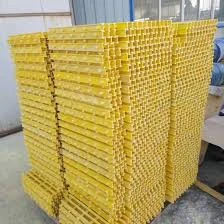
-
 Afrikaans
Afrikaans -
 Albanian
Albanian -
 Amharic
Amharic -
 Arabic
Arabic -
 Armenian
Armenian -
 Azerbaijani
Azerbaijani -
 Basque
Basque -
 Belarusian
Belarusian -
 Bengali
Bengali -
 Bosnian
Bosnian -
 Bulgarian
Bulgarian -
 Catalan
Catalan -
 Cebuano
Cebuano -
 China
China -
 China (Taiwan)
China (Taiwan) -
 Corsican
Corsican -
 Croatian
Croatian -
 Czech
Czech -
 Danish
Danish -
 Dutch
Dutch -
 English
English -
 Esperanto
Esperanto -
 Estonian
Estonian -
 Finnish
Finnish -
 French
French -
 Frisian
Frisian -
 Galician
Galician -
 Georgian
Georgian -
 German
German -
 Greek
Greek -
 Gujarati
Gujarati -
 Haitian Creole
Haitian Creole -
 hausa
hausa -
 hawaiian
hawaiian -
 Hebrew
Hebrew -
 Hindi
Hindi -
 Miao
Miao -
 Hungarian
Hungarian -
 Icelandic
Icelandic -
 igbo
igbo -
 Indonesian
Indonesian -
 irish
irish -
 Italian
Italian -
 Japanese
Japanese -
 Javanese
Javanese -
 Kannada
Kannada -
 kazakh
kazakh -
 Khmer
Khmer -
 Rwandese
Rwandese -
 Korean
Korean -
 Kurdish
Kurdish -
 Kyrgyz
Kyrgyz -
 Lao
Lao -
 Latin
Latin -
 Latvian
Latvian -
 Lithuanian
Lithuanian -
 Luxembourgish
Luxembourgish -
 Macedonian
Macedonian -
 Malgashi
Malgashi -
 Malay
Malay -
 Malayalam
Malayalam -
 Maltese
Maltese -
 Maori
Maori -
 Marathi
Marathi -
 Mongolian
Mongolian -
 Myanmar
Myanmar -
 Nepali
Nepali -
 Norwegian
Norwegian -
 Norwegian
Norwegian -
 Occitan
Occitan -
 Pashto
Pashto -
 Persian
Persian -
 Polish
Polish -
 Portuguese
Portuguese -
 Punjabi
Punjabi -
 Romanian
Romanian -
 Russian
Russian -
 Samoan
Samoan -
 Scottish Gaelic
Scottish Gaelic -
 Serbian
Serbian -
 Sesotho
Sesotho -
 Shona
Shona -
 Sindhi
Sindhi -
 Sinhala
Sinhala -
 Slovak
Slovak -
 Slovenian
Slovenian -
 Somali
Somali -
 Spanish
Spanish -
 Sundanese
Sundanese -
 Swahili
Swahili -
 Swedish
Swedish -
 Tagalog
Tagalog -
 Tajik
Tajik -
 Tamil
Tamil -
 Tatar
Tatar -
 Telugu
Telugu -
 Thai
Thai -
 Turkish
Turkish -
 Turkmen
Turkmen -
 Ukrainian
Ukrainian -
 Urdu
Urdu -
 Uighur
Uighur -
 Uzbek
Uzbek -
 Vietnamese
Vietnamese -
 Welsh
Welsh -
 Bantu
Bantu -
 Yiddish
Yiddish -
 Yoruba
Yoruba -
 Zulu
Zulu
FRP Chimney Design and Installation for Industrial Applications and Efficiency
FRP Chimney Construction and Installation for Industrial Applications
Fiber Reinforced Polymer (FRP) chimneys have become increasingly popular in industrial applications due to their durability, lightweight characteristics, and resistance to corrosion. As industries strive for efficiency and sustainability, the role of modern materials like FRP in chimney construction has gained prominence. This article explores the construction and installation of FRP chimneys, highlighting their benefits, design considerations, and the installation process.
Advantages of FRP Chimneys
1. Corrosion Resistance One of the standout features of FRP materials is their exceptional resistance to corrosive environments. Many industries, such as chemical manufacturing, power generation, and wastewater treatment, often deal with acidic or alkaline emissions that can rapidly deteriorate traditional materials like steel or concrete. FRP chimneys, being inherently resistant to these corrosive elements, can significantly reduce maintenance costs and increase longevity.
2. Lightweight Construction FRP chimneys are much lighter than their metal or concrete counterparts. This characteristic leads to easier handling during construction, reduces the structural load on buildings, and minimizes the costs associated with foundation support. The lightweight nature of FRP allows for quicker installation, which is a critical asset in industrial settings where downtime can lead to significant financial losses.
3. Thermal Insulation FRP materials possess excellent thermal insulation properties, which helps in managing the temperature of emissions effectively. This feature can be vital in reducing thermal stress on the chimney structure and associated equipment, thus enhancing overall performance.
Design Considerations
When considering FRP chimney construction, several design factors need to be taken into account
- Height and Diameter The design of the chimney must adhere to regulatory standards that dictate height and diameter based on the type and volume of emissions
. Proper elevation is crucial for dispersing pollutants safely into the atmosphere.- Material Selection The choice of resin and composite materials is essential for ensuring the chimney can withstand specific environmental conditions. Factors such as chemical exposure, temperature, and UV resistance play significant roles in material selection.
frp chimney construction and installation for industrial and ...

- Structural Integrity The engineering design must account for wind load, seismic activity, and other external pressures that can affect the chimney’s stability. Proper structural analysis is necessary to ensure safety and compliance with industrial standards.
Installation Process
The installation of FRP chimneys involves several stages
1. Site Preparation Before installation can commence, a thorough site assessment is conducted. This includes evaluating the soil stability for the foundation and ensuring that all site-specific regulations and safety protocols are followed.
2. Foundation Construction A robust foundation is essential for the successful installation of a chimney. Depending on the weight and size of the FRP chimney, the foundation must be designed accordingly to provide adequate support.
3. Assembly of Chimney Sections FRP chimneys are typically fabricated in sections that can be easily transported to the installation site. These sections are then assembled using specialized adhesives and mechanical fasteners to ensure a tight and secure fit.
4. Final Installation and Testing Once assembled, the chimney is lifted into its final position, often using cranes or other heavy machinery. After installation, a series of tests are conducted to confirm structural integrity and compliance with emission standards.
Conclusion
FRP chimney construction and installation present a forward-thinking solution for various industrial applications. Their corrosion resistance, lightweight nature, and thermal properties make them an ideal choice in today’s demanding environments. As industries continue to evolve, the adoption of advanced materials like FRP is crucial in promoting sustainability, efficiency, and safety in chimney infrastructure. By understanding the benefits and processes associated with FRP chimneys, industries can make informed decisions that lead to successful implementation and long-term operational advantages.









